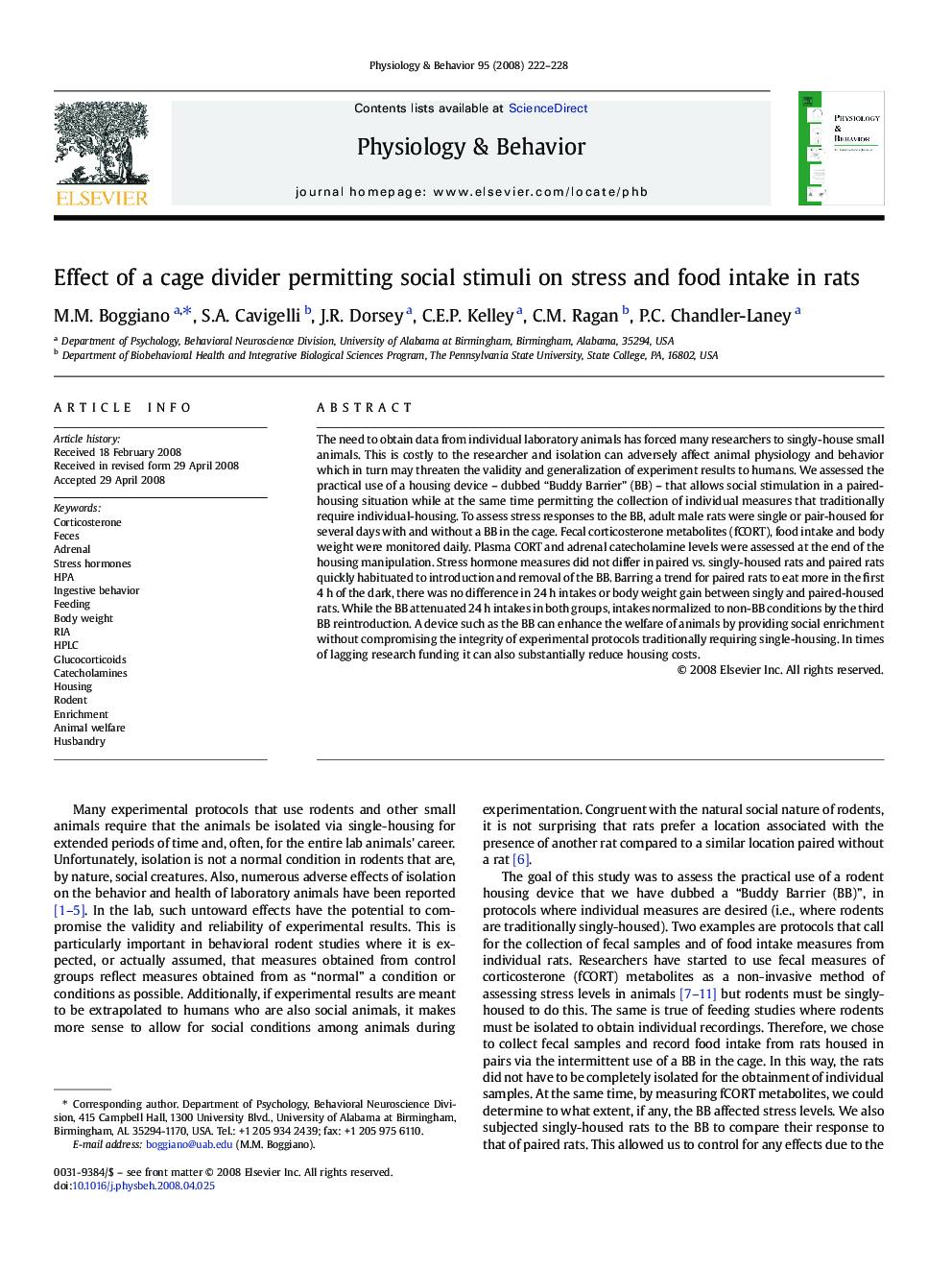| کد مقاله | کد نشریه | سال انتشار | مقاله انگلیسی | نسخه تمام متن |
|---|---|---|---|---|
| 2845397 | 1571212 | 2008 | 7 صفحه PDF | دانلود رایگان |

The need to obtain data from individual laboratory animals has forced many researchers to singly-house small animals. This is costly to the researcher and isolation can adversely affect animal physiology and behavior which in turn may threaten the validity and generalization of experiment results to humans. We assessed the practical use of a housing device – dubbed “Buddy Barrier” (BB) – that allows social stimulation in a paired-housing situation while at the same time permitting the collection of individual measures that traditionally require individual-housing. To assess stress responses to the BB, adult male rats were single or pair-housed for several days with and without a BB in the cage. Fecal corticosterone metabolites (fCORT), food intake and body weight were monitored daily. Plasma CORT and adrenal catecholamine levels were assessed at the end of the housing manipulation. Stress hormone measures did not differ in paired vs. singly-housed rats and paired rats quickly habituated to introduction and removal of the BB. Barring a trend for paired rats to eat more in the first 4 h of the dark, there was no difference in 24 h intakes or body weight gain between singly and paired-housed rats. While the BB attenuated 24 h intakes in both groups, intakes normalized to non-BB conditions by the third BB reintroduction. A device such as the BB can enhance the welfare of animals by providing social enrichment without compromising the integrity of experimental protocols traditionally requiring single-housing. In times of lagging research funding it can also substantially reduce housing costs.
Journal: Physiology & Behavior - Volume 95, Issues 1–2, 3 September 2008, Pages 222–228